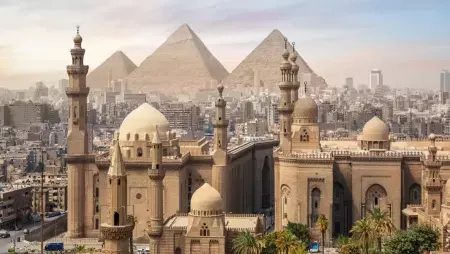Ages Egyptian Gods: Symbols of Power, Nature, and the Afterlife
For the Egyptians, the gods dominated every aspect of life-from the rising of the sun to the journey after death. Each god represented natural forces, human feelings, or spiritual thoughts. At various times, Egyptians worshiped well over 1,500 gods and goddesses, each with their own tales and symbols reflecting their intricate and multifaceted beliefs.
Amun (Amon)
In the Egyptian pantheon, Amun was among the very powerful gods. He rose to fill the national importance and was merged with the solar god to form Amun-Ra as he had been initially a local Theban deity. Amun was usually depicted in human form wearing a tall feathered crown or with the head of a ram, with which he thought to represent creation, mystery, and divine authority.
Osiris
Osiris was the Egyptian God of the underworld, resurrection, and fertility. He was often portrayed with green or black skin, wearing a White Crown of Upper Egypt, and wrapped like a mummy. The myth of Osiris and his resurrection following betrayal by his brother Set became one of the most important religious narratives in Egyptian mythology.
Isis
Isis, wife of Osiris and mother of Horus, was honored as the goddess of magic, motherhood, and protection. The meaning of her name is "throne," and she is often represented either wearing a crown shaped like a throne or bearing cow horns with a sun disk between them. One of the most adored deities in ancient Egyptian religion, she played a great role in ritualistic practices and healing arts.
Horus
The falcon-headed Horus is regarded as god of kingship and the sky. Being the son of Isis and Osiris, Horus became the protector of the ruler of Egypt. His right eye was the sun, and his left was the moon. Temples and statues dedicated to Horus stand throughout Egypt, maintaining order and justice.
Apis
Apis was a sacred bull worshipped in Memphis and associated with fertility and strength. Bearing certain markings and a solar disc between its horns, Apis embodied the confluence of physical power and divine presence. Upon death, Apis was believed to join with Osiris to become Osiris-Apis.
Ptah
Ptah, considered the creator god and patron of craftsmen, was especially worshipped at Memphis. He was usually depicted as a mummified man holding the scepter of life, of stability, and power. According to the story, Ptah created the world by thinking and speaking; this is probably one of the earliest recorded instances of creation by word.
Hathor
Hathor was the goddess of love, music, joy, and the sky. She was frequently depicted with cow horns and a sun disk and was the personification of femininity, beauty, and nurture. Known also as "The House of Horus," she was linked to motherhood and enjoyed wide worship throughout Egypt.
Ra (Re)
Ra was the sun god and one of the most important deities in Ancient Egypt. He sailed across the sky during the day and penetrated the underworld at night, symbolizing the cycle of life, death, and rebirth. While the god was usually depicted with a human body and the head of a falcon with a sun disk resting on top, other gods may have been merged into him with time, most notably Amun, creating Amun-Ra.
Anubis
Anubis was the jackal-headed god and was the god of mummification and protector of the dead. He watched over the tomb and guided the souls through the underworld. Anubis played a critical role in the burial rites and the famous "Weighing of the Heart" ceremony, which was to determine one's destiny in the afterlife.
Atum
Atum was, in Egyptian religion, the first god who created himself out of nothing. He then created the first divine couple-Shu and Tefnut. The name means "the complete one," and he is often depicted as a man wearing the double crown of Egypt. Atum was the setting sun and embodied the complete and renewal.
Aten
The Aten was the supreme god of Akhenaten. Unlike other deities, Aten was depicted as a sun disk from which rays endowed life upon the world below with the hands at each ray's end. This period saw a dramatic change in Egyptian religion-the shift toward a form of monotheism that would not survive Akhenaten's death for long.
Imhotep
Not a god to begin with, Imhotep was deified after death because of his extraordinary achievements in architecture and medicine. It was he who designed the Step Pyramid at Saqqara, and shortly thereafter, he was linked with healing and wisdom. Later, the Greeks assimilated him with their god of medicine, Asclepius.


.jpg)

.jpg)
.jpg)









